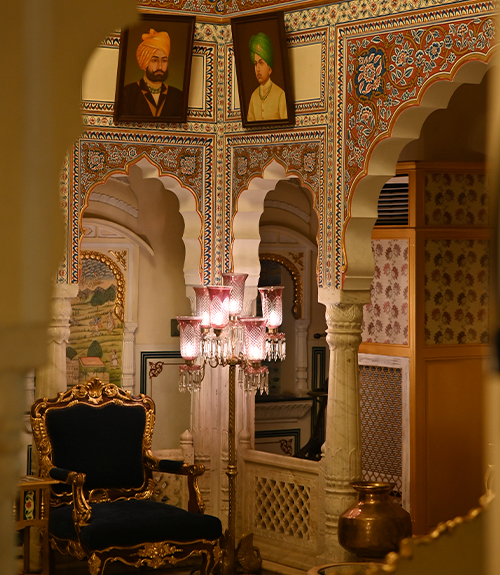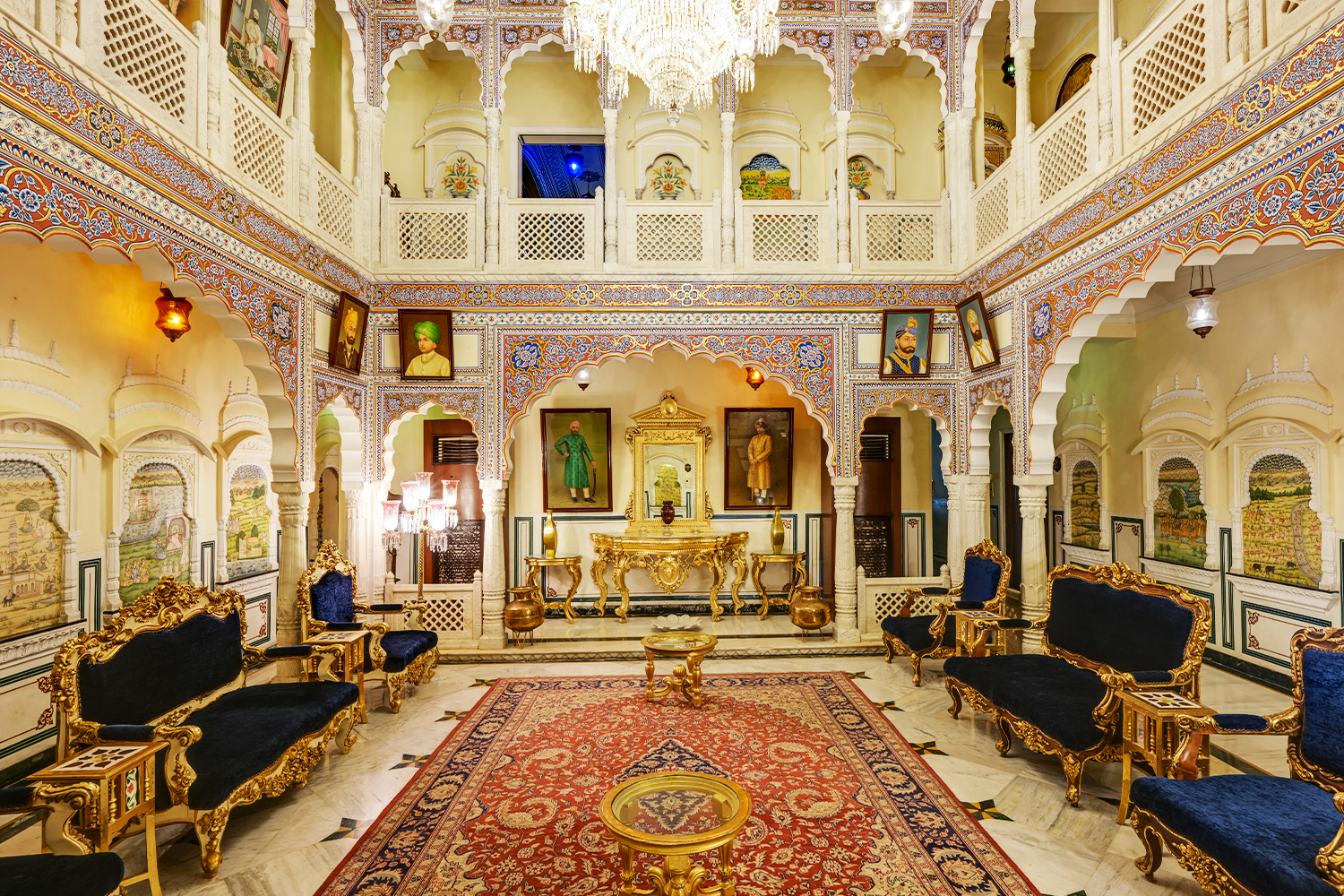
Imagine a leisure room full of antiques and artifacts, where every object seems to have stepped out of a folklore once told by your grandfather. Shahpura House feels like exactly such a tale where royalty does not announce itself with grandeur but quietly exudes a refined sense of luxury. The warmth of “Khamma Ghani” wasn’t just a greeting—it became a feeling I carried home, as from the reception to my room I was gently guided by the Darbans of the house, eager to share stories of lineage and tradition.
My journey to this world got deeper the moment I stepped through its narrow, winding alleys. The architecture, mystical and inviting, pulled me into a realm where heritage and grandeur were not history lessons but a lived experience. Antique furnishings with their worn textures stood beside maximalist accents thoughtfully placed to catch the eye, offering a vivid glimpse into the regal life of comfort and intent once lived by the “Maharajas”.
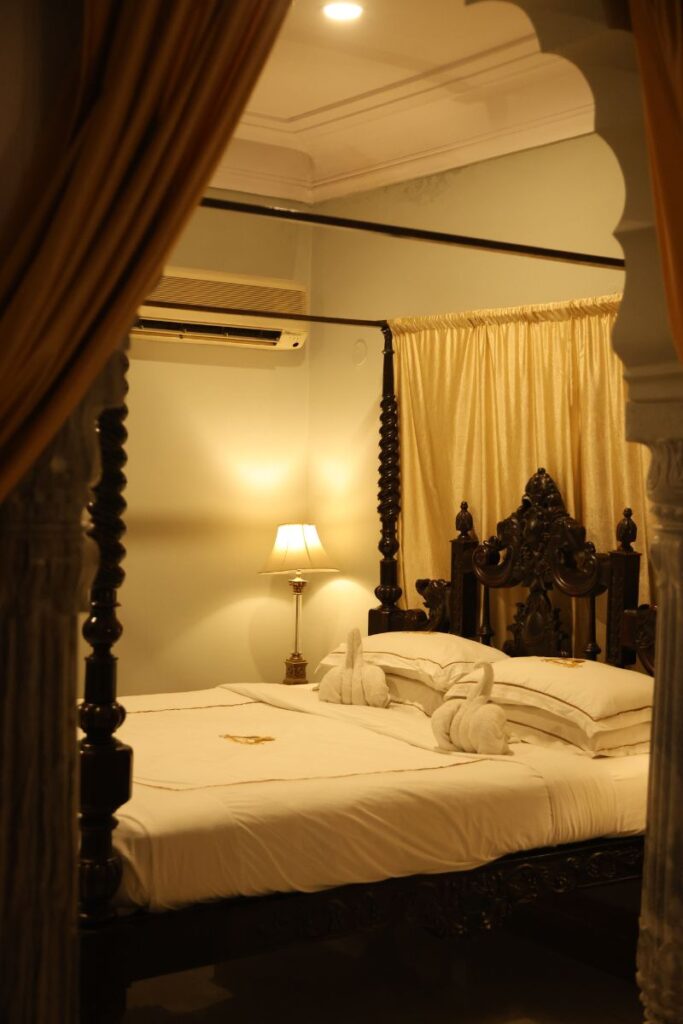
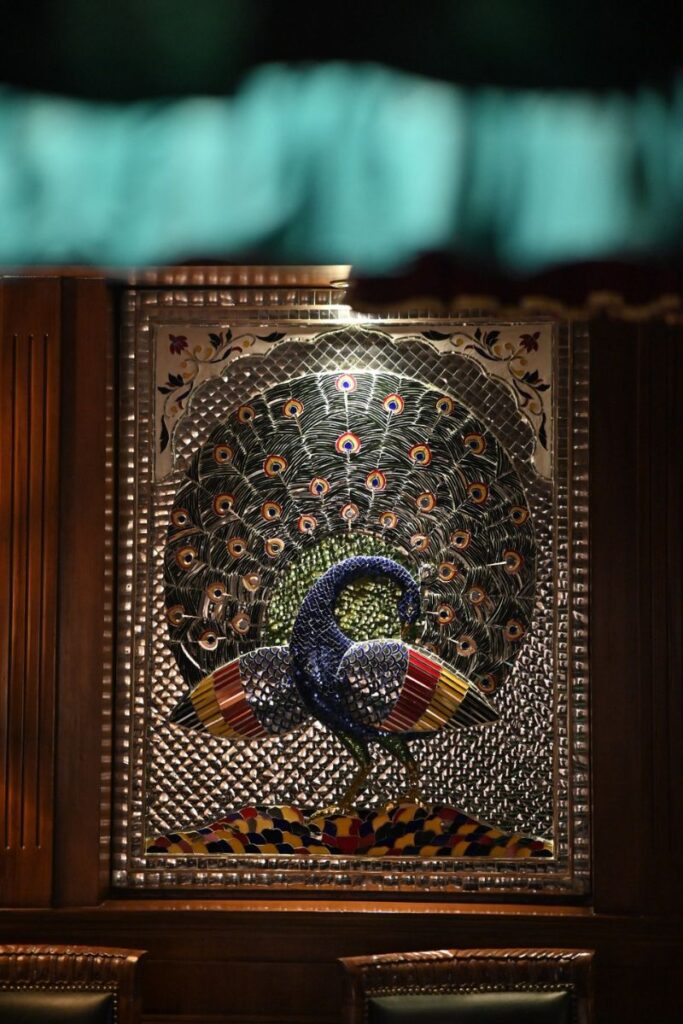
This was no accidental décor. Every element from the gleaming brass taps to the peacock-Thikri glasswork, the clan insignias curling like scrolls over the walls was an intentional display of lineage, crafted to offer guests more than aesthetics. It felt like stepping into a Harry Potter-inspired world, where symbols, textures, and shadows whispered secrets of dynasties and long-standing rituals. The placement of the pool table beside handwoven rugs, the antique lamps casting amber light across carved corridors, and the quiet hush of spaces untouched by sunlight but aglow through Mehrab arches all contributed to an atmosphere both intimate and awe-inspiring.
The main hall left me especially spellbound. Devoid of natural sunlight, it stood in quiet elegance, its shadows dancing with every flicker of the chandelier that hung like a jewel in the center. The intricate glasswork, far more delicate and ornate than anything I had ever seen, caught and refracted light, bathing the carved arches and velvet drapes in a gentle golden glow. It felt less like illumination and more like a gentle invitation to witness the artistry that defines this space.
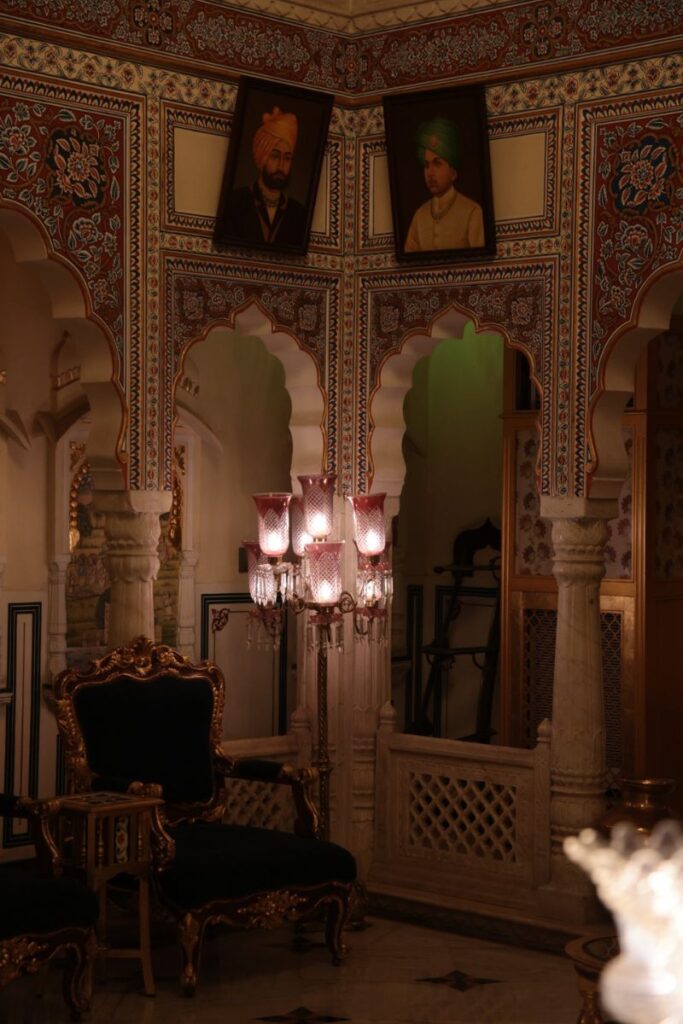
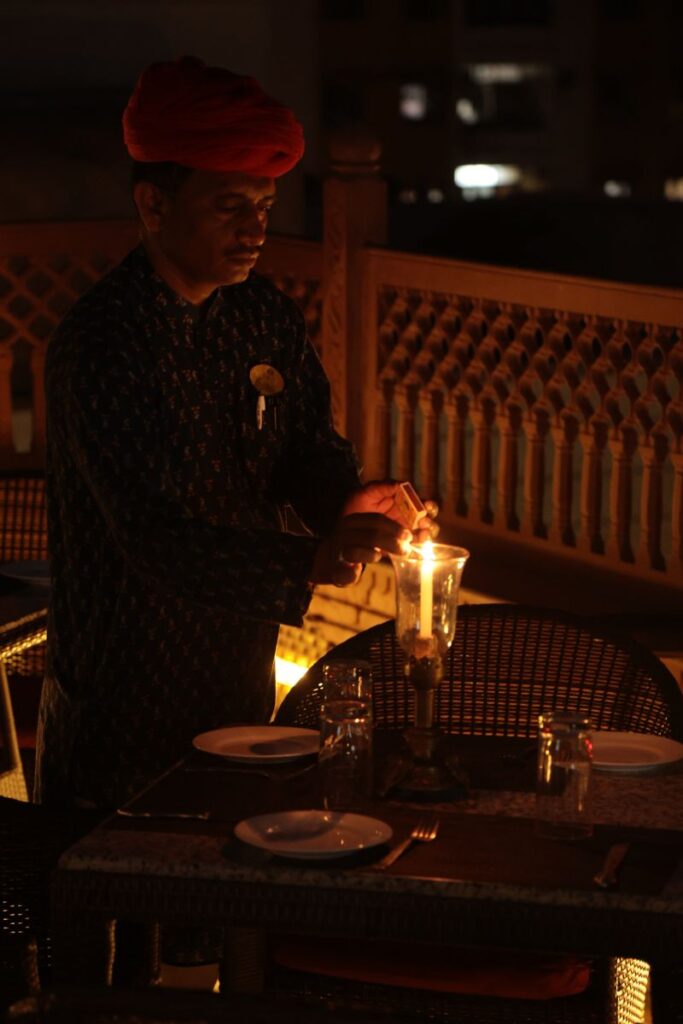
My room, curated with plush fabrics and antique textures, was at once indulgent and comforting. The bed, dressed in linen that seemed steeped in stories, embraced me like an old confidant. I admired the calm quiet of the space—the grand silence broken only by distant footsteps or the flutter of a peacock’s cry—as I sat by the window, soaking in the deliberate artistry around me.
The dining experience continued this journey through time. At Rasa, regional flavors rose in delicate, refined presentations, paying homage to centuries of royal indulgence. At Sapphire, Western influences balanced the palette, creating a dialogue between worlds as fluid as the estate’s own heritage. Even the arrangement of cutlery, glassware, and crockery spoke of purposeful design rather than extravagance for its own sake.
As evening descended, the halls came alive with folk singing, the rhythmic grace of Kalbalia dance, and cultural performances that breathed life into traditions once reserved for royal courts. I could almost imagine kings lounging in these spaces, their conversations mingling with laughter and music, as amber light flickered across ornate walls.
Shahpura House is not simply a retreat, it is an experience, a rare dialogue between the past and present, where lineage is preserved not as a relic, but as a living, breathing art of hospitality. I left feeling not just pampered but touched by a feeling that lingers long after the journey ends.

